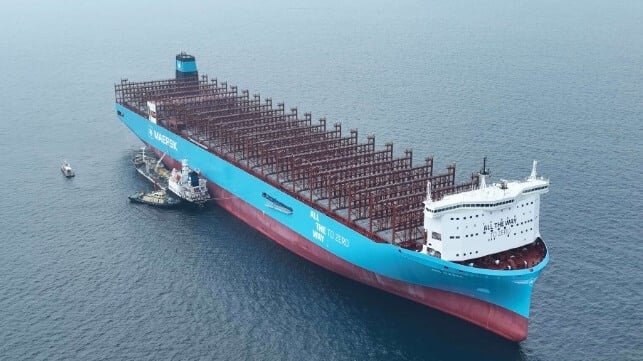By Michael Grey*

The design of a ship was once a delicate balance in which an endless series of compromises were necessary to end up with a half-decent vessel. You wanted something box-shaped, to carry all the revenue-earning cargo, but had to modify your desires to accommodate something more streamlined under water. You wanted speed, but only with the minimum thirst for fuel and the dimensions had to be fined down to fit into the ports you wished to use.
Then there were the various international regulations with which you would have to comply, which might, for one reason or another, affect the design. And if the changes to custom and practice were too dramatic, you would have to front up to a very senior and serious regulator, who would fiercely interrogate you about your proposals and possibly require changes. In the UK there was the Chief Ship Surveyor, who was not somebody who would brook much argument, if it involved tinkering with the regulations, and whose interpretation of the same was final.
One supposes that much the same procedures apply today, although you have to wonder with some of the extraordinary designs that are to be seen at sea, and in computer-generated imagery produced by clever designers. How do they convince the regulators, under what ever flag they propose to fly, that this amazing ship is fully compliant and the designers’ elastic interpretations of the various rules are safe? You might say that classification societies will have undertaken the lion’s share of the approvals, but class, let’s face it, is probably singing from the same hymn sheet as the owner.
These reactionary thoughts stem from a perusal of a popular shipping monthly, in which are illustrations of some of the latest triumphs of modern maritime design.
How do you, for instance, approach the regulator with the design of a bulk carrier in which there is a gigantic cylindrical tank of ammonia on the afterdeck? Never mind the regulator – what about the port authority where you are hoping to tie up this monster on a regular basis? Nobody ever asks the seafarers about these things, but if this is the view out of their cabin window, and (assuming they have a rough idea of the characteristics and hazards of this fuel), will they be rushing to sign on? An alternative design, for a large containership, placed the huge integral ammonia tanks under the accommodation island, where it did not interfere with the payload. Where else would you put it?
There is an excellent profile picture of a very large methanol-fuelled container ship, where the crew accommodation and navigation bridge appear to have been an afterthought and is perched on the forecastle-head. Brilliant use of every metre of the ship’s length for cargo carrying, but not much compromise here.
One cannot avoid asking about details, which the designers would consider thoroughly petty, such as the position of the steaming lights, or the fact that if a lifeboat is needed the crew will have to run aft about a quarter of a mile to embark. Sure, they will have a better view than they have on the average boxboat, where natural light is dimmed by the back end of a container.
And if you consider that a trial by pilots on a very large container ship of conventional design revealed that eight minutes elapsed between the pilot boat arriving alongside and the perspiring pilot arriving on the bridge, these bridge-forward babies will need faster and fitter pilots. Arriving alongside, the pilot will climb the ladder, march smartly up the gangway, then sprint six bays forward to the base of the accommodation, where one hopes an elevator is waiting to speed him skywards to the information exchange with the master.
Is this just nit-picking by some old time-expired seafarer? Or did anyone actually consider these matters, while being furiously focussed on getting the absolute maximum number of boxes within the desired length? And in the urge to save the planet do we really know what we are doing with potentially dangerous fuels? And in the remorseless march towards sustainability, with huge sails and rotors festooning the foredeck of more ships, does anyone ever consider the issue of forward visibility? But of course, we know that the modern, screen-based modern mariner would rather focus on the instruments than scan a far horizon. Why bother with windows?
(Photo of recently-introduced methanol-powered Ane Maersk with forward bridge.)
*Michael Grey is former editor of Lloyd’s List. This column is published with the kind permission of The Maritime Advocate.





